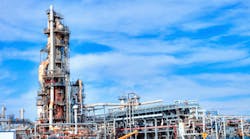While it’s not news that the availability of cheap natural gas is attracting investment in the U.S, it is noteworthy to see just how large those investments really are.
From 2011 to August 2014 investments totaled $124 billion, in the form of 196 announcements of new chemical plants or upgrades to existing U.S. plants. This is according to the American Chemistry Council as reported by Nanette Byrnes in the MIT Technology Review.
Ten years ago everyone was talking about projects in the Middle East,” says Fernando Musa, CEO of Braskem America, a Philadelphia-based subsidiary of the Brazilian thermoplastic resin leader. “Now if you go to industry forums in the U.S., Europe, or Asia, everyone is talking about investing here in the U.S.”
(Note: Last year the Council released a report “Shale Gas, Competitiveness, and New U.S. Chemical Industry Investment: An Analysis Based on Announced Projects” that followed a number of the projects.)
Some expansions such as ExxonMobil’s (IW 500/1) ethane cracker in Houston, and BASF’s (IW 1000/36) ammonia plant in Freeport, Texas will be constructed near the Gulf Coast, to take advantage of the cheap gas.
Other expansions are further down the supply chain. Nucor opened a plant in Louisiana that will use natural gas to strip oxygen from iron ore, a technique that, before the shale boom, had been too expensive for the company to do in the U.S., according to Brynes.
An IHS study, as reported by Steve Minter of IndustryWeek, found that dramatic increases in domestic crude oil and natural gas production, are resulting in a continuing period of major investments that include pipelines, rail, ships, storage facilities, refineries and facilities to liquefy natural gas.
Between 2014 and 2020, an average of more than $80 billion will be invested annually in petroleum infrastructure. After 2020, that investment will moderate but the research firm expects direct capital investment will still be nearly $60 billion by 2025.
The University of Texas’ Center for Energy Economics last July announced a study that found 144 natural gas-intensive industrial projects on the drawing board that could be built by the end of the decade.
They include processing facilities for the production of ethylene, methanol, ammonia, urea, nitrogen fertilizer, and gas-to-liquids, among others, as reported by Nick Cunningham in Oilprice.com.
Cunningham notes that the projects could total $121 billion in investment and add 26 billion cubic feet per day of natural gas demand.
Cunningham summarizes what many believe to be the future with regard to U.S. investment.
For the last few years, low natural gas prices have attracted many companies to “reshore” their operations as lower energy costs offset higher labor costs. The natural gas industry has trumpeted the shale revolution, and has claimed that the “reindustrialization” of America will be a permanent fixture in this new era of energy abundance.



